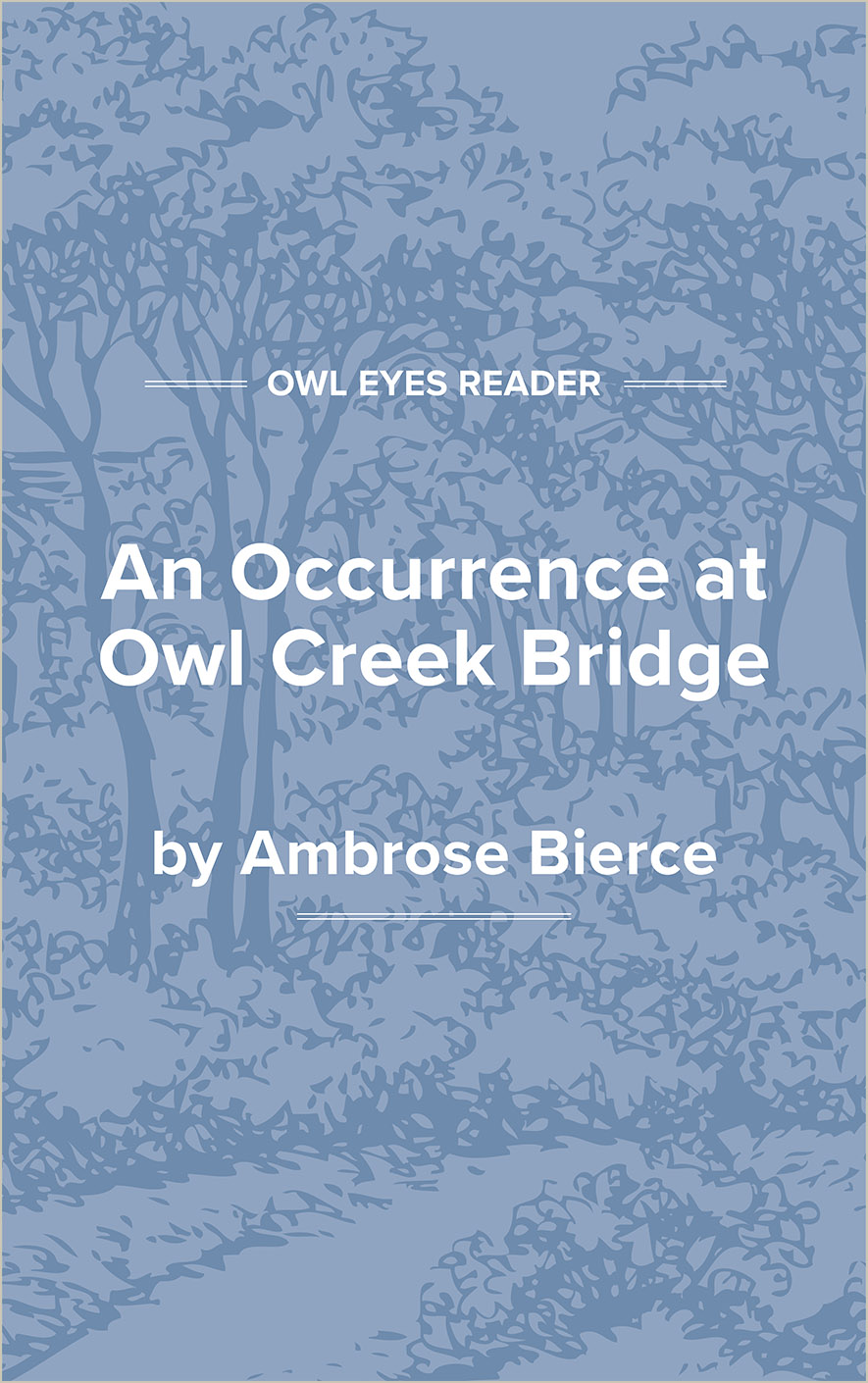Study Guide
Analysis Pages
Summary
“An Occurrence at Owl Creek Bridge” is by far Bierce’s most widely read story, and it may also be his best. It focuses on Peyton Farquhar, a Southern planter and part-time Confederate conspirator, who, as the story opens, is about to be hanged on the Owl Creek bridge for having attempted to burn it. As Farquhar is being hanged, the reader is told, the rope breaks and he plunges alive into the water below. The rest of the story recounts his escape down the creek and then through the forest toward his home. Just as he reaches his house, where his wife awaits him, he feels a sharp blow to the back of his neck. In reality, he is not home at all: He hangs dead, of a broken neck, beneath the Owl Creek bridge. The rope has not, in fact, broken. Farquhar’s escape has been only a momentary illusion.
What makes this plot so successful, as it lures the reader into the story, and what makes the whole story so captivating, is the technical brilliance of the narration. Bierce begins the story, for example, with a very objective, unadorned, strikingly dispassionate, and minutely detailed description of both the soldiers and Farquhar on the bridge as the former prepare for the latter’s execution. The objectivity of the prose lends an official air to the narrative, almost as though it were not a piece of fiction at all but a military report. This objectivity combines with the detail with which the scene is set, including everything from an explanation of the various postures of the soldiers to the exaggerated ticking of the prisoner’s watch, to lend a profound degree of realism to the story. The reader is thus led to believe from the beginning of the story that what is being told is minutely accurate.
Once Farquhar is in the water, the tone is far less dispassionate, however, as the narrator enters the head of the fleeing prisoner, focusing on Farquhar’s reactions both to the soldiers who pursue him and to the task of escape. Details abound here as well, though, ironically, it is through these details that the reader is provided with hints (extremely subtle ones, almost certainly imperceptible to the first-time reader) that Farquhar’s escape is but a dream and not real at all. Farquhar’s senses as he escapes, for example, are heightened beyond those of a normal human being, as he can even see the insects on each leaf of the trees on the creek bank from his position in the water.
Later, Bierce’s description of the forest as Farquhar heads homeward becomes dreamlike. The reader is told that the road Farquhar takes “was as wide and straight as a city street, yet it seemed untraveled.” Elsewhere, the narrator reports that the forest “on either side was full of singular noises, among which—once, twice, and again—he distinctly heard whispers in an unknown tongue.” As Farquhar gets closer to home, he feels pain and swelling in his neck. While much of this description may be attributed to a prisoner actually fleeing from his near...
(The entire page is 786 words.)
Owl Eyes subscribers get unlimited access to our expert annotations, analyses, and study guides on your favorite texts. Master the classics for less than $5/month!

